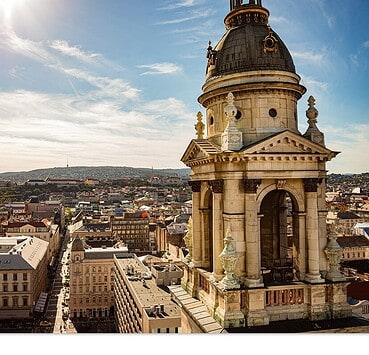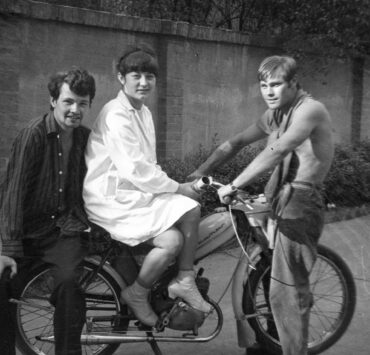Concluding our three-part series about notable Hungarian composers, we now take a look at the life and works of Zoltán Kodály. Kodály’s life was closely tied to Bartók’s as they both lived and worked towards the same goal: preserving Hungarian traditional music.
Although such preservation work wasn’t his sole purpose in life, it had a fundamental impact on his own compositions. Born in a smaller city, Kodály went from singing in his local cathedral choir, to being the president of the Hungarian Arts Council. With the vast experience and innovation he brought to his craft, Kodály remains one of the most influential musical figures in Hungary.
The inspirational Galánta
On a cold December day in 1882, Zoltán Kodály was born into the family of a transient railway official in Kecskemét. Thus, his family didn’t stay in any one place for long. Some two years after his birth they relocated to Galánta. The young composer lived there until 1891, and it remained a special place to him throughout his life. Galánta would later inspire one of Kodály’s most famous pieces of music.
The next stop in Kodály’s life was Nagyszombat, where he sang in the local church choir. Additionally, his parents encouraged him to learn the violin, which he enjoyed despite being committed to learning literature. As with many composers, Kodály studied sacred music, which inspired his first compositions. Honouring him, his school orchestra played one of his first works in 1897.
Budapest years
Because of Kodály’s love for literature, he chose the University of Sciences of Budapest (don’t let the name confuse you) for his undergraduate studies. However, only two years into his studies, he transferred to the Academy of Music, taking on the monstrous task of pursuing a Ph.D. in Hungarian folk music. An important part of such activity was going on field trips to collect and record music. He and Bartók worked together extensively at this time.
You can read our earlier article about Bartók here. Kodály’s work played a crucial role in preserving Hungarian art culture. Obsessed with it, he incorporated many folk elements into his original compositions. Some 50 years after starting work, a first full collection was published in 1951.
French influence
Having strong ties with Paris, Kodály was very much a fan of French impressionist composers such as Debussy. He spent months in Paris attending lectures, networking with composer and gaining inspiration. Once he settled back in Budapest, the Royal Academy of Music offered him a place as music theory teacher. He soon taught composition there too.
Combining field research, composing and performing, as well as teaching was no easy task for Kodály. That isn’t to say that he wasn’t successful at it. Even after retiring as a professor, he was asked to take on the role of Director at the academy.
Breakthrough works
Kodály’s music is highly diverse. First appearing on the world stage in 1910, his debut was a successful one. His partnership with Bartók extended to having shared concerts. Psalmus Hungaricus- one of his breakthrough works, was created in time for the celebration of the reunification of Buda and Pest. Inspired by Psalm LV, an ancient 16th century text, Psalmus Hungaricus combined the best of two worlds – classical and folk. Both motifs can be heard throughout. Psalmus Hungaricus became a must listen in Kodály’s repertoire. Being a strong believer in vocal music Kodály composed iconic operas.
An earlier work entitled Háry János as well as the later The Spinning Room were well received by audiences. Based on Hungarian dance melodies, Dances of Galánta and Dances from Marosszék were published. What makes them unique is the unprecedented combination of folk music with the traditional orchestral format. The culmination of his career is by far the Peacock Variations, commonly known as Variations on a Hungarian Folk Song. If you wish to experience compositions with less Hungarian motifs, try Kodály’s Concerto for the Orchestra, or his Symphony in C.
The “Kodály method”
A year before his death, Kodály toured the United States, giving a lecture at Stanford University. In 1967, aged 84, his heart stopped beating, yet his legacy lives on. Probably as long as people will sing, Kodály will live in millions of hearts. The “Kodály method” is taught in schools across the globe.
His talent as a teacher resulted in an extensive repertoire for learners of all levels. His music is celebrated and performed both in and outside Hungary. In Pécs a full-length bronze statue is located, facing towards a playground and with its back to the city’s cathedral. It is said that the sculptor wished for it to be like that, as one of Kodály’s life goals was to teach music to children.
By Illya Ovchar







